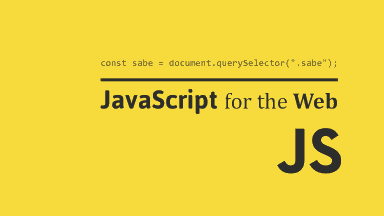前言:
本文内容:变量的作用域 let和const、方法的定义和调用 apply、Date日期对象
推荐免费JavaScript基础讲解视频:【狂神说Java】JavaScript最新教程通俗易懂_哔哩哔哩_bilibili
变量的作用域、let、const
变量的作用域
js中,var定义变量实际是有作用域的。
假设在函数体中声明,则在函数体外不可以使用。
1
2
3
4
5
| function box(){
var x = 1;
x = x+1;
}
x = x+2;
|
如果两个函数使用了相同的变量名,只要在函数内部,就不冲突。
1
2
3
4
5
6
7
8
| function box(){
var x = 1;
x = x+1;
}
function box1(){
var x = 2;
x = x+1;
}
|
内部函数可以访问外部函数的成员,反之则不行。
1
2
3
4
5
6
7
8
| function box(){
var x = 1;
function box1(){
var y = x+1;
}
var z = y+1;
}
|
假设,内部函数变量和外部函数的变量重名。
假设在JavaScript中,函数查找变量从自身函数开始,由内向外查找 ,假设外部存在同名的函数变量,内部变量会屏蔽外部变量。
1
2
3
4
5
6
7
8
9
10
11
| function box(){
var x = 1;
function box1(){
var x = 'A';
console.log(x)
}
box1()
console.log(x)
}
box()
|
提升变量的作用域
1
2
3
4
5
6
| function box(){
var x = 'x'+y;
console.log(x);
var y = 'y';
}
box()
|
结果:xundefined
js执行引擎自动提升了y的声明,但不会提升变量y的赋值。
建议所有的变量定义都放在函数的头部,便于维护。
1
2
3
4
5
6
| function box1(){
var y;
var x = 'x'+y;
console.log(x)
y = 'y';
}
|
全局函数
1
2
3
4
5
6
7
|
x =1;
function box(){
console.log(x);
}
console.log(x);
box()
|
全局对象:window
1
2
3
| var x = 'xxx';
alert(x);
alert(window.x);
|
alert()本身也是一个window变量。
1
2
3
4
5
6
7
8
9
10
11
12
| var x = 'xxx';
window.alert(x);
var old_alert = window.alert;
window.alert = function(){
};
window.alert(123);
window.alert = old_alert;
window.alert(456);
|
js实际只有一个全局作用域,任何变量(函数也可视为变量),假设没有在函数作用范围内找到,就会向外查找。如果在全局作用域中也没找到,就会报RefrenceError
规范:
由于我们所有的全局变量都会绑定到window上,如果不同js文件使用相同的全局变量,可能发生冲突-> 减少冲突的方法;
1
2
3
4
5
6
7
|
var Jokerdig ={}
Jokerdig.name='JokerDaxiong';
Jokerdig.add = function(a,b){
return a+b;
}
|
把自己的代码全部放入自己定义的唯一空间中,降低全局命名冲突的问题;
局部作用域 let:
1
2
3
4
5
6
| function section(){
for (var i = 0; i <100 ; i++) {
console.log(i)
}
console.log(i+1)
}
|
ES6 let关键字,解决局部作用域冲突;(推荐使用)
1
2
3
4
5
6
| function section(){
for (let i = 0; i <100 ; i++) {
console.log(i)
}
console.log(i+1)
}
|
常量const
在ES6之前,定义常量:只要用全部大写字母命名的就是常量;
1
2
3
4
| var PI = '3.14';
console.log(PI);
PI = '213';
console.log(PI);
|
ES6引入const,来定义常量。
1
2
3
| const PI ='3.14';
console.log(PI);
|
方法的定义和调用、apply
定义方法
方法就是把函数放在对象里;(对象包括:属性和方法)
1
2
3
4
5
6
7
8
9
10
11
12
13
14
| var jokerdig ={
name: 'JokerDaxiong',
sex: '男',
birth: 1999,
age: function () {
var now= new Date().getFullYear();
return now-this.birth;
}
}
jokerdig.name
jokerdig.age()
|
this代表什么?
拆分上方代码;
1
2
3
4
5
6
7
8
9
10
11
12
13
14
15
16
17
|
function getAge(){
var now= new Date().getFullYear();
return now-this.birth;
}
var jokerdig ={
name: 'JokerDaxiong',
sex: '男',
birth: 1999,
age: getAge
}
console.log(jokerdig.age())
|
this是无法指向的,它默认指向调用它的那个对象;
apply
在JavaScript中控制this指向;
1
2
3
4
5
6
7
8
9
10
11
12
13
14
15
16
17
18
19
|
function getAge(){
var now= new Date().getFullYear();
return now-this.birth;
}
var jokerdig ={
name: 'JokerDaxiong',
sex: '男',
birth: 1999,
age: getAge
}
console.log(jokerdig.age())
console.log(getAge.apply(jokerdig,[]))
|
Date日期对象
标准对象
1
2
3
4
5
6
7
8
9
10
11
12
13
14
15
16
| typeof 123
"number"
typeof '123'
"string"
typeof true
"boolean"
typeof NaN
"number"
typeof []
"object"
typeof {}
"object"
typeof Math.abs
"function"
typeof undefined
"undefined"
|
Date对象
Date基本使用
1
2
3
4
5
6
7
8
9
10
11
12
13
14
15
|
var now = new Date();
console.log(now)
console.log(now.getFullYear());
console.log(now.getMonth());
console.log(now.getDay());
console.log(now.getDate());
console.log(now.getHours());
console.log(now.getMinutes());
console.log(now.getSeconds());
console.log(now.getTime());
console.log(new Date(1645686594044));
console.log(now.toLocaleString());
|


